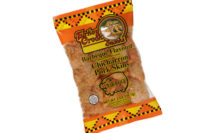
Snack Healthy
By David Morris
Senior Consumer Analyst, Mintel
Senior Consumer Analyst, Mintel
Americans long have believed in the maxim that bigger is better. We love big houses, big cars ... and big food. We like to Biggie Size, Super Size and maximize. Want to buy a “small” drink to enjoy with your larger-than-life summer blockbuster at the movie theater? In many cases, you can’t — the sizes start at medium and continue up to “bigger than you can carry.”
However, there’s growing evidence that our attitudes about food are beginning to change.
Influenced by the high level of media attention focused on the obesity epidemic in the United States and the related consumer trend toward healthy eating, healthy snacks fast are becoming a key development area for manufacturers. This could be good news for the 60 million adult Americans who are obese, according to 2005, Centers for Disease Control and Prevention data.
In assessing the market for healthy snacks, Mintel has identified 12 food segments that cover a variety of products, with total sales of more than $17 billion dollars for 2006. These segments include crackers, cheese, yogurt, nuts and seeds, cereal, energy, cereal, snack and diet bars, dried fruit and fruit snacks, popcorn, better-for-you chips and cheese snacks, pretzels, trail mix and rice/popcorn cakes.
While some segments are thought of as more traditional snack choices than others, consumers consider each of them to be a significant degree of snack. Combined, these segments grew sales by 20% between 2001 and 2006, or 6% in constant terms.
Market Trends
As an antidote to “super-sizing,” new products also are targeting on portion-control, healthier versions of popular snack foods products, organic/natural ingredients and ingredient variety, including flavorings as well as added nutrients. As a result, a number of products have recently seen positive growth.
Of Mintel’s latest Healthy Snacking report, only three of the 12 healthy snacking segments saw declines during 2004-06: cheese (down 1.3%), cereal (down 0.8%) and popcorn (down 2.4%). The cheese and cereal declines reflect larger scale drops in those categories, while popcorn has suffered due to lack of innovation.
The remaining segments increased sales, including better-for-you chips and cheese snacks (up 60.3%), rice and corn cakes (up 38.8%) and trail mix (up 41.4%).
Better-for-you chips and snacks have fared particularly well due to product reformulations such as Baked Cheetos and conventional products created with healthier ingredients such as Cape Cod Whole Earth Tortilla Chips, made with whole grains.
While consumers may be trying to reduce our waists, Americans still are keen on taste. A key trend is the increasing number of better-for-you foods that still taste good and have mass appeal. Products that are tasty, healthy and portable for today’s on-the-go consumer appeal on a variety of levels, and it in essential that manufacturers keep these attributes at the forefront of product development.
Whole grains, in particular, are gaining momentum in an increasing number of product reformulations. According to research by the U.S. Department of Agriculture, individuals with slightly elevated cholesterol experience a decline in blood pressure when they increase their consumption of whole grain foods. In the study, participants who had mildly high cholesterol were placed on a controlled diet for two weeks, followed by a period during which refined carbs were replaced with whole grain foods. Among participants, blood pressure declined during all the whole grain diets.
Girth of a Nation
Perhaps not surprisingly, given the “girth of a nation” epidemic our country is facing, some respondents to a Mintel survey listed cookies as a healthy snack. Although cookies generally are not considered a segment of the healthy snacking market, this perception may be due to a number of recent natural ingredient and “healthy” product introductions.
In August 2006, the Kashi Co. launched the TLC chewy cookie line, representing the first cookie on the market to include seven whole grains and marking Kashi’s entry into the cookie segment. Available in Oatmeal Dark Chocolate, Happy Trail Mix and Oatmeal Raisin Flax varieties, the cookies come in cartons of eight.
Nabisco also is promoting whole grains to boost a number of its cookie lines, including the Newton, Chips Ahoy! and Honey Maid lines, in a move to help people “get some of the nutrition they need from the foods they love,” according to the company.
Quaker also has come up with a product that it is labeling as a breakfast cookie that is a whole grain, vitamin- and mineral-packed breakfast product.
Even with these recent innovations, this product type remains ripe for a healthy makeover.
Portion Control
In recognition of the consumer backlash against oversize portions and the desire to better control the amount of calories they consume, controlled portion packaging is a recent trend, evidenced by products like Kraft’s Nabisco 100-calorie snack packs, Kellogg’s Keebler Right Bites and Procter & Gamble’s Pringles one-serving canisters.
The argument is that these calorie-controlled packages are particularly helpful in fighting childhood obesity. From January through September 2006, there were 27 100-calorie snack portion products introduced. Comparatively, for all of 2005, there were only 40 introductions.
However, the question remains whether this trend will hold weight or become a passing fad. While Kraft Foods spent a total of $34 million on media to promote these products from July 2004 through December 2005, Kellogg has spent nothing, relying instead on in-store efforts.
Ingredient Variety
Snack producers also are expanding the ingredient options available in their products. Wheat remains the most popular variety in the United States, but other grains such as amaranth and quinoa are gaining support. According to the American Heart Association, federal guidelines recommending three servings of whole grains a day have created a halo around all grains, including whole wheat, barley, brown rice and others. For example, Nu-World Amaranth reported a 300% increase in sales in the past three years and Bob’s Red Mill saw a 25% increase in sales in the past year, helped primarily by increased sales of quinoa. ConAgra Mills is currently working to produce more sustagrain, a type of barley with 30% fiber content.
Moreover, the United Soybean Board sponsored a 2006 study called “The Consumer Attitudes About Nutrition” showing that continued interest in health and diet issues have increased demand for functional foods such as soy. Over the years, the perception of soy as healthy has increased dramatically. In fact, 82% of respondents last year believed it to be a healthy ingredient, a jump of 15% from the 67% who thought it was healthy in 1998, the study says. To that end, Quaker Soy Crisps had sales increases of 172.7% per Information Resources, Inc., for year-over-year end July 16, 2006. This was just one product that helped propel the rice cake segment forward
According to Mintel, adding new flavoring twists to conventional snacks is another ingredient variety theme gaining ground in the marketplace, as is the case with Kellogg’s sweet-and-salty granola bar with chocolate and nuts, and General Mills’ Nature Valley sweet and salty nut granola bars, both launched based on positive consumer feedback on combining sweet and salty flavors.
Nut manufacturers also are adding flavoring to traditional products. For example, Blue Diamond Growers’ Bold Almonds now feature such flavors as Lime ‘n Chili, Jalapeño Smokehouse, Wasabi and Soy Sauce, and Maui Onion and Garlic.
Optimistic Forecast
As the obesity epidemic grows and emerges as a focus of government and private industry attention, consumers are becoming increasingly aware of the danger of unhealthy eating habits. Despite constantly changing consumer demands, Mintel believes that the nation’s trend toward health-consciousness will continue to drive the demand for grocery options that help combat obesity while still allowing people to eat foods that please the palate. SF&WB
Editor’s Note: For more information about new products and Mintel, visit www.Mintel.com


